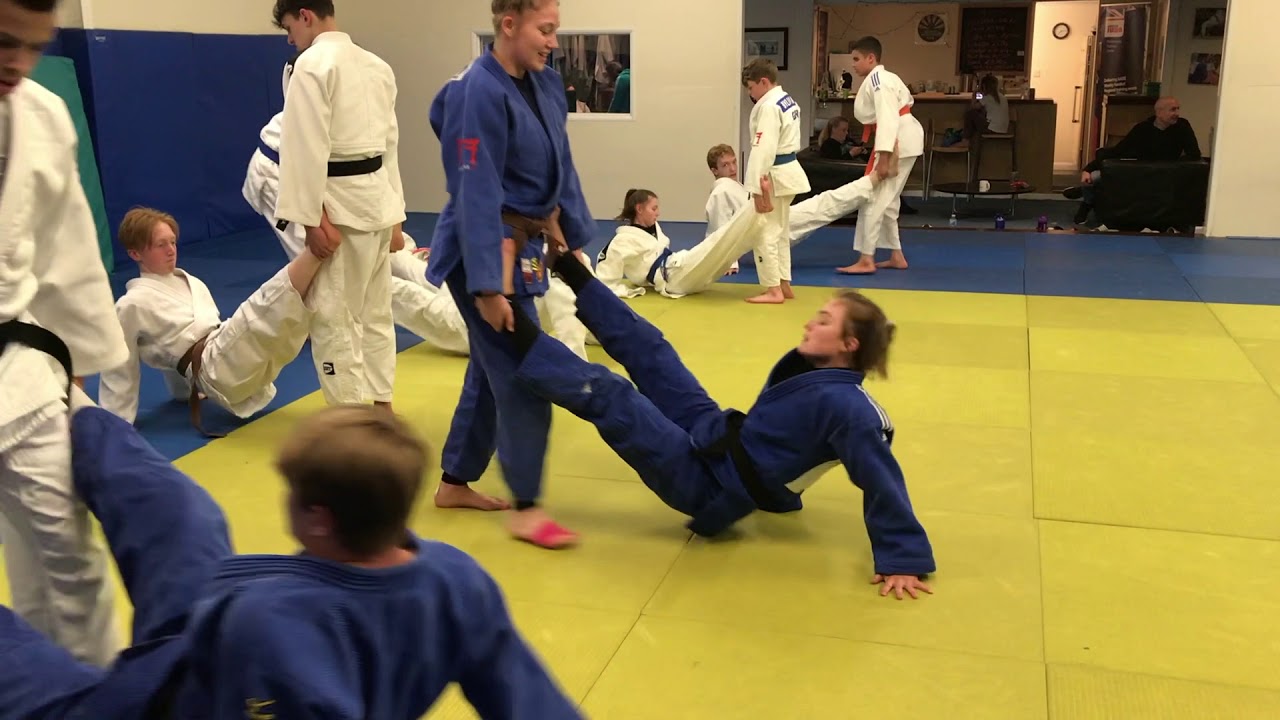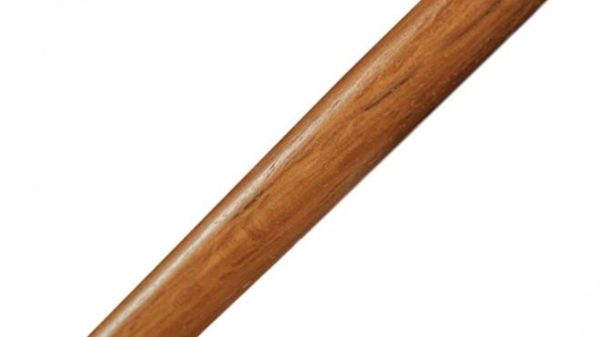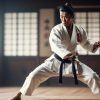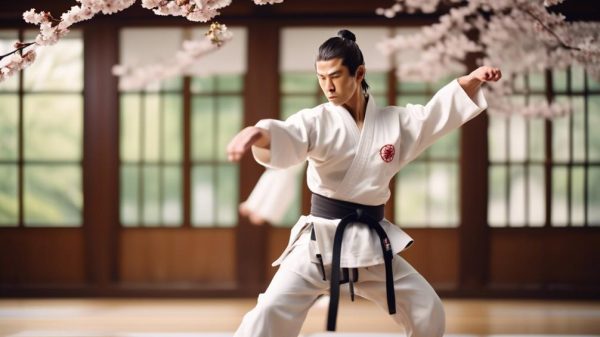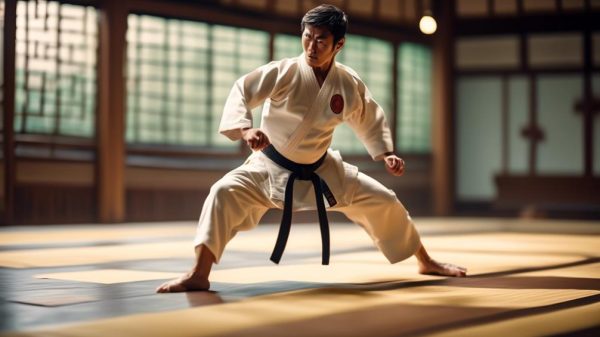Getting ready to train hard takes warming up muscles so they don’t get hurt. In judo, athletes need to prep their entire body from head to toe before tossing each other around!
Proper warm-ups transform the body from stiff and cold to relaxed and sweating. Easy movements raise the heart rate and loosen up joints little by little. Building intensity makes muscles more flexible and fluid.
Judo warm-ups always involve rotating all body parts around. Athletes will shake out arms, twist torsos, circle knees, and point-flex feet. Stretches also activate muscles before intensive throwing practice begins.
Dynamic moves like squats, crawls, and jogging in place further prep the body for the rigors of judo. Working together in pairs helps, too. The right warm-up makes training safer plus readies judoka to give 100 percent effort when it’s time.
The Importance of Warm-Ups
The significance of warming up in judo can’t be overstated. Before delving into the art of judo, it’s essential to prepare your body through deliberate and dynamic warm-up exercises.
These exercises play a crucial role in priming your muscles and breath for the rigorous activity that follows. In judo, mastery isn’t just about technique execution but also about adequately preparing your body for the performance.
The warm-up routines serve as an introduction, setting the stage for the physical demands of judo practice.
The warm-up exercises in judo aren’t mere formalities; they intricately synchronize the rhythm of breathing with muscle readiness, allowing you to engage in strenuous activities with grace and poise.
By stretching your body’s limits through warm-up exercises, you can minimize the risk of injuries, prepare your muscles for movement, and elevate your heart rate to align with the training tempo.
The warm-up session acts as a safeguard, meticulously designed to prevent injuries that could hinder your progress. Entrusting your warm-up routines to trained instructors ensures that each session aligns with the philosophy of judo—emphasizing efficiency and control. As blood flows through your muscles, the anticipation of the upcoming physical challenge reaches a peak, culminating in a state of readiness.
Dynamic Stretching Techniques
As you move into dynamic stretching techniques, embrace the fluid movements that improve your flexibility and prepare your muscles for the judo journey ahead. Mastery requires more than repetition; it demands conscious engagement with every motion. Your warm-up is the foundation of your martial arts prowess, and dynamic stretching is crucial in this preparatory phase.
View each technique as a vital part of your training. Without the need for equipment, your body becomes the instrument of your progress. Let your instructor guide you through exercises that combine agility with power, preventing injuries by strengthening your resolve.
In the dojo, every stretch is a dialogue between mind and muscle, a lesson in the physics of force and the poetry of movement. Your warm-up isn’t just a prelude; it’s an integral part of your martial arts education. Dynamic stretching exercises transform rigidity into resilience. Pay attention to your body’s signals to prevent distress.
Train with intention, stretch with purpose, and the art of judo will reveal its secrets to you.
Core Strengthening Drills
Harnessing the fluidity from dynamic stretching, you must now fortify the core, the epicenter of judo’s power and stability. It’s the foundation upon which all techniques are built, the silent guardian of balance and the springboard for explosive movements. In martial arts classes, core strengthening drills aren’t merely an option—they are a necessity.
Under the watchful eye of a trained martial arts instructor, engage in exercises designed to harden your center. Planks, Russian twists, leg raises—these are the tools to forge an unyielding core. Each repetition is a step towards mastery, every breath a testament to your dedication.
But beware, the path to strength is fraught with potential missteps. Injuries and to ensure that proper technique is utilized, these drills must be executed on Arts Training EquipmentPractice mats, and always supervised by a trained professional. Warm-up routines in order are your armor against harm.
Your instructor will weave in additional stretches and exercises, crafting a regimen that helps to prepare martial artists for the rigors of vigorous martial arts training. Embrace this crucible, for within it lies the key to unlocking true martial prowess.
Lower Body Mobility Exercises
Enhance your foundation by focusing on the fluidity of your lower body movement.
Lower body mobility plays a crucial role in combat, serving as your anchor amidst the storm.
Engage in hip rotation drills to develop a centered core that moves harmoniously with the forces at play.
Additionally, incorporate leg swing variations and ankle flexibility techniques to unleash your full potential, enabling you to move seamlessly and strike with precision.
Hip Rotation Drills
Improving lower body agility and minimizing the risk of injury requires incorporating hip rotation drills into your routine. These exercises should be performed under supervision to ensure proper form and are a crucial component of warm-up routines. They help to relax your muscles and elevate your heart rate, preparing you for the rigorous martial arts training that follows.
| Benefit | Description |
|---|---|
| Power | Develop the force behind your techniques. |
| Speed | Increase the swiftness of your movements and surpass limitations. |
| Safety | Safeguard against potential injuries. |
Instructors use warm-up routines to instill these fundamentals. The cornerstone of your warm-up session, and hopefully your practice, is mastering the hip rotation drills, converting movement into art and vulnerability into strength.
Leg Swing Variations
Enhancing your lower body’s agility and grace in martial arts involves practicing various leg swing variations. These exercises are crucial for loosening and preparing the sinews for the demands of kicking. It’s important to perform each leg swing deliberately and with proper technique to develop precision in your martial arts skills.
Guidance from an experienced martial arts instructor is invaluable and complements personal practice. Their supervision helps prevent injuries and instills discipline essential for a warrior. Mastery in martial arts isn’t just about practice; it requires dedicated training and living the principles of the art.
Ankle Flexibility Techniques
Ankle Flexibility Techniques
Improving ankle flexibility is crucial for martial artists to enhance their kicking ability and agility. It’s essential to develop flexible joints on the journey to mastering martial arts.
Ankle circles, toe inscriptions, and deliberate flexion stretches are fundamental exercises that form the basis for fluid combat movements. With guidance from a skilled martial arts instructor, these ankle flexibility techniques serve as a defense against potential injuries.
Each calf raise and resistance band exercise contributes to strengthening your abilities. It’s important to execute these techniques correctly as it elevates simple movements to an art form.
This information is shared to empower and purposefully integrate these techniques into your training. Embrace these exercises and techniques, for in the wise dojo, agility is a warrior’s most valuable asset.
Upper Body Activation Routines
Upper Body Activation Routines
As you engage in shoulder rotation drills and arm stretching techniques, envision yourself as the sculptor of your own body. Each movement, every stretch, is akin to a chisel strike shaping your form, preparing you for the martial art of judo.
These rituals safeguard your sinews, ready your muscles for action, and refine your body into a tool of precise control.
Shoulder Rotation Drills
Shoulder rotation drills are crucial for judokas, awakening the upper body’s latent power and ensuring a supple yet robust foundation for the art of the throw.
In the pursuit of martial arts mastery, your training should serve as a crucible, refining both the mind and sinew. Under the watchful eye of a martial arts instructor, these drills, when executed with proper technique, become a safeguard—fortresses designed to prevent injuries that would otherwise lay siege to the unprepared.
Approach each warm-up session with intention. Allow the disciplined rotations to mirror the cycles of growth inherent in martial arts training. Supervised practice transforms simple shoulder rotation drills into a conduit of resilience, priming you for the rigors of arts techniques and training.
Arm Stretching Techniques
Arm stretching techniques are more than just a way to prepare your upper body. These techniques help prevent injuries and strengthen your muscles. Each stretch is an opportunity to communicate with your muscles, teaching them strength and balance.
In a martial arts studio, proper techniques can teach you how to maintain your health. When you warm up, focus on arm stretching to improve your martial arts abilities and safeguard against injuries.
Mastering arm stretching techniques is essential for your progress.
Breathing and Mental Preparation
Before stepping onto the mat for judo, it’s crucial to focus on controlling your breath and centering your mind to surpass the physical demands of the sport.
The warm-up session serves as more than just a physical preparation; it’s a mental crucible that readies martial arts students for the challenges both inside and outside the dojo.
As a martial artist, mastering the breath is essential; it acts as the fuel for your spirit. Deep, controlled breathing forms the foundation upon which your mind steadies itself in the midst of combat.
Visualize each maneuver and encounter with unwavering clarity, allowing this knowledge to permeate your being. Release any tension from anticipation and let true strength flow through relaxation.
Execute techniques with a calm yet focused mind, and infuse them with intent, allowing your breath to guide you to mastery.
You’ll begin with a dynamic movement and stretching routine to prepare your body. Next, you’ll engage in Judo rolls, balance drills, and grip strengthening exercises to improve agility and activate your core.
See PART 2 of our Judo warm-up routine series.
Additionally, focus on strengthening your core, improving balance, and practicing plyometric jumps to establish a solid foundation.
Finally, remember to breathe and maintain focus throughout your warm-up routine.
See our second part of this series here: JUDO WARM-UP EXERCISES part 2

